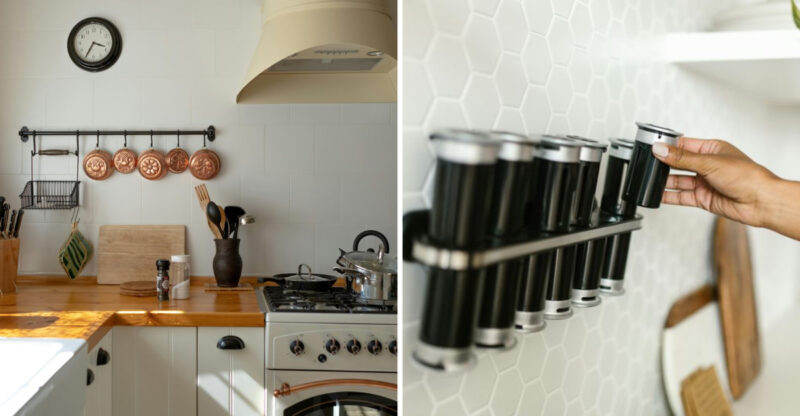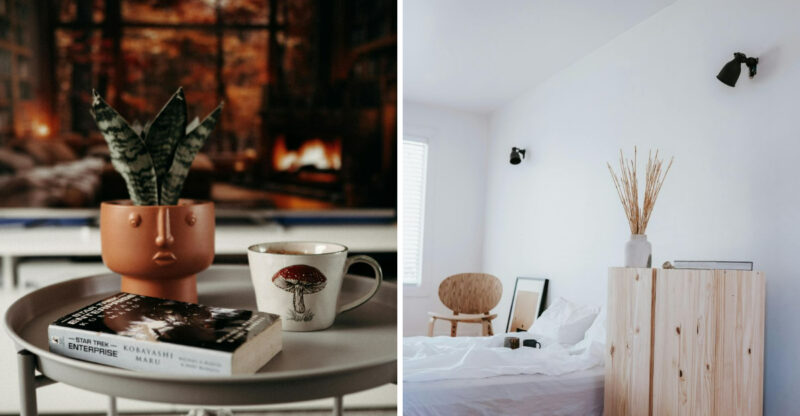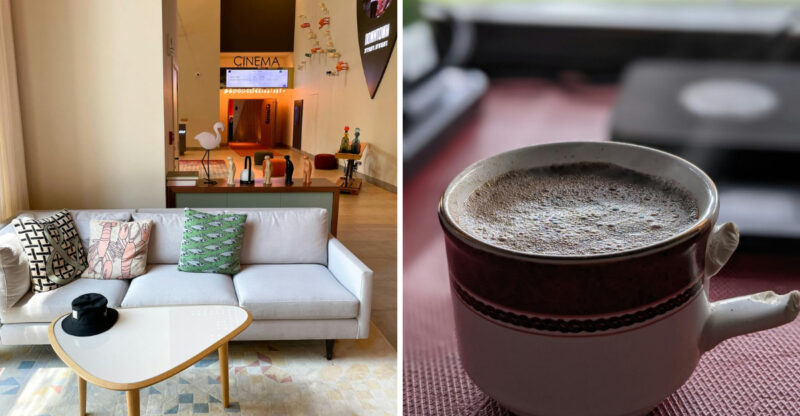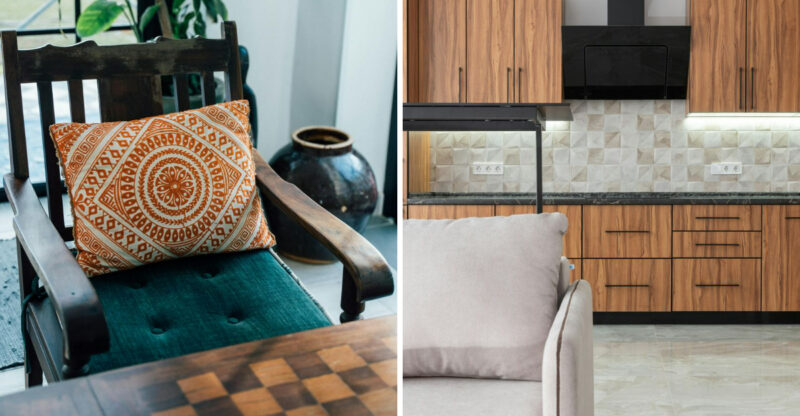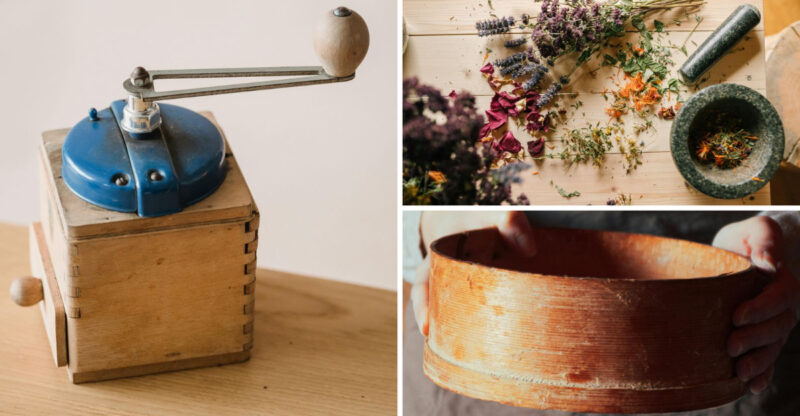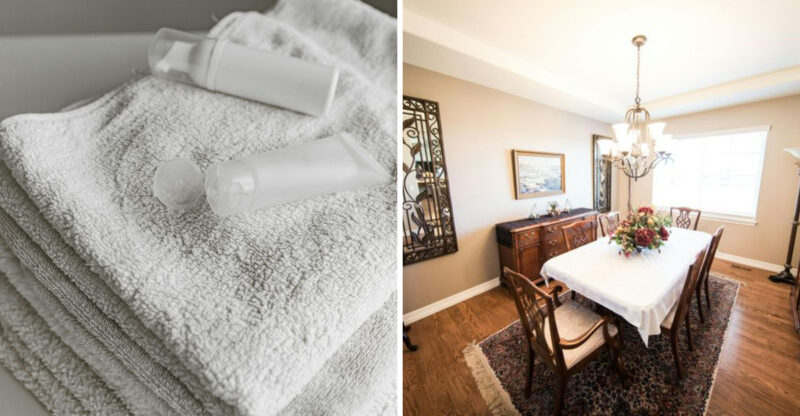Don’t Buy These 18 Homes In Texas They’ll Be Outdated By 2030
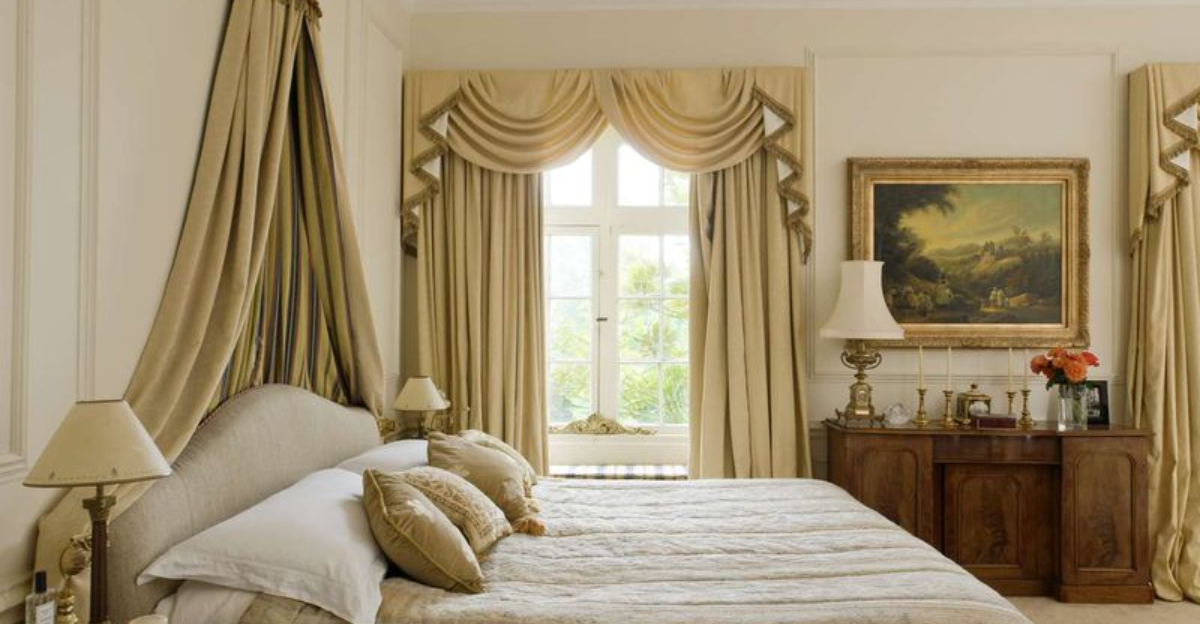
The Texas housing market is booming, but not all properties are created equal. Some homes feature design elements that are already showing their age and will likely be completely passé by 2030.
Before you invest your hard-earned money in a property that could quickly lose its appeal, take note of these soon-to-be outdated home features that are still common throughout the Lone Star State.
1. Faux-Stucco Exteriors

Texas homebuilders love faux stucco for its affordability and Southwestern aesthetic, but this trendy exterior finish is heading for a massive downturn.
The material often cracks in extreme Texas heat and traps moisture during humid seasons, leading to expensive repairs. Homebuyers are increasingly favoring authentic materials with better durability like genuine stucco, brick, or modern fiber cement siding. Even worse, many insurance companies have started charging higher premiums for homes with this exterior.
If you’re touring homes with this telltale orange-beige coating, remember that a full exterior replacement could cost upwards of $20,000 – money better spent elsewhere in today’s evolving housing market.
2. Split-Level Layouts
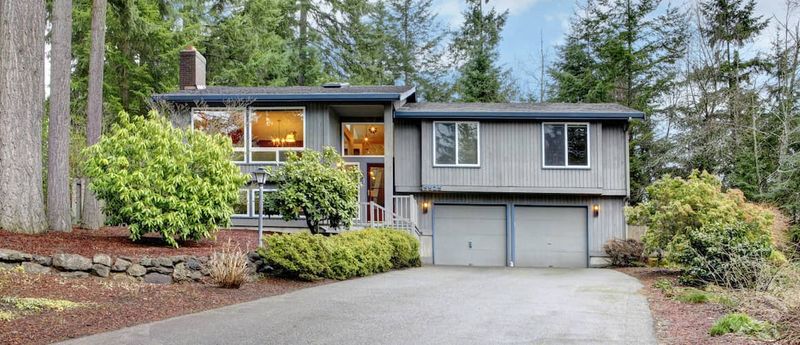
Split-level homes once dominated Texas suburbs, but their choppy floor plans with half-flights of stairs are rapidly falling from favor. Modern families find these layouts impractical and difficult to navigate, especially for aging residents or those with mobility issues.
The disconnected living spaces create awkward transitions between rooms, making the home feel smaller than it actually is. Heating and cooling these segmented areas efficiently also becomes a challenge in Texas’s extreme climate conditions.
Renovating a split-level home into an open concept requires major structural changes that often cost more than the investment return. Buyers are increasingly gravitating toward single-level ranch styles or modern two-story homes with clearer divisions.
3. Pop-Up Ranch Homes
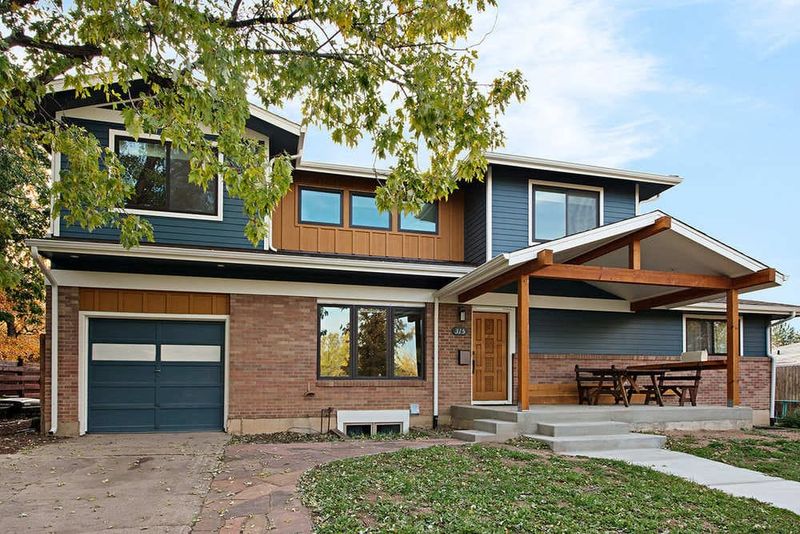
Pop-up ranch homes – those single-story houses with awkward second-floor additions – are quickly becoming dinosaurs in the Texas housing landscape.
These mismatched structures were popular quick fixes during the 1980s housing boom but create serious structural and aesthetic problems. The jarring rooflines not only look dated but often cause drainage issues during Texas’s heavy rain seasons. Inside, the floor plan typically feels cobbled together, with strange transitions and inefficient use of space.
Energy efficiency is another major concern these homes weren’t designed with Texas heat in mind, making cooling costs astronomical. By 2030, these architectural oddities will likely require complete remodels to remain competitive in the market.
4. Pink-Toned Bathrooms

Pink bathrooms might evoke nostalgic feelings, but they’re rapidly becoming a liability in Texas real estate. These cotton-candy colored suites complete with matching tile, tubs, and sometimes even toilets – scream 1950s and not in a charming, vintage way.
Homebuyers today overwhelmingly prefer neutral, spa-like bathrooms that feel clean and contemporary. The pink tile typically installed in these bathrooms is nearly impossible to match if damaged, forcing complete renovations when problems arise.
While some design elements cycle back into fashion, real estate experts agree that pink bathrooms won’t be making a comeback in the Texas market. Homes sporting these rosy relics will require costly updates to compete with newer properties by the end of this decade.
5. Heavy Floral Wallpaper
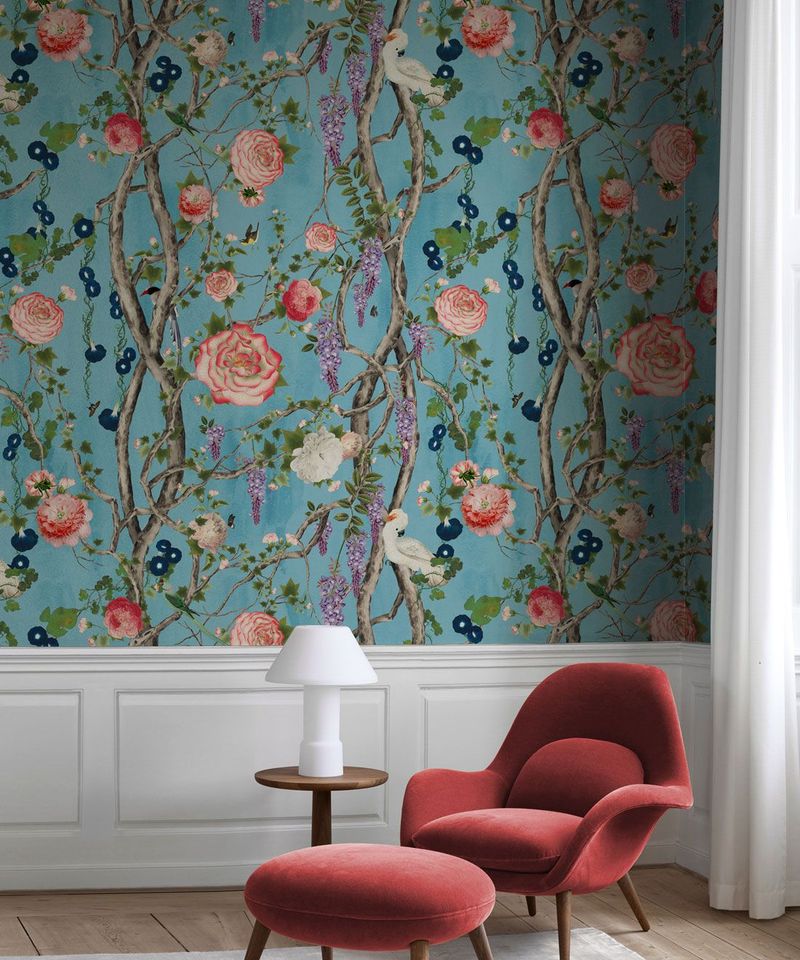
Heavy floral wallpaper is quickly becoming the kiss of death for Texas home resale value. Those dark, busy patterns popular in the 1980s and 90s make rooms feel smaller and darker exactly the opposite of what buyers want in sunny Texas.
Removing this outdated feature isn’t simple either. Many of these wallpapers were applied with heavy-duty adhesives that damage drywall during removal, turning what seems like a cosmetic update into a major renovation project costing thousands.
Modern homebuyers are looking for light, bright spaces with clean lines and minimal visual clutter. By 2030, homes still sporting these botanical nightmares will be immediately earmarked for extensive renovations, dramatically reducing their market appeal and value.
6. Carpeted Bathrooms
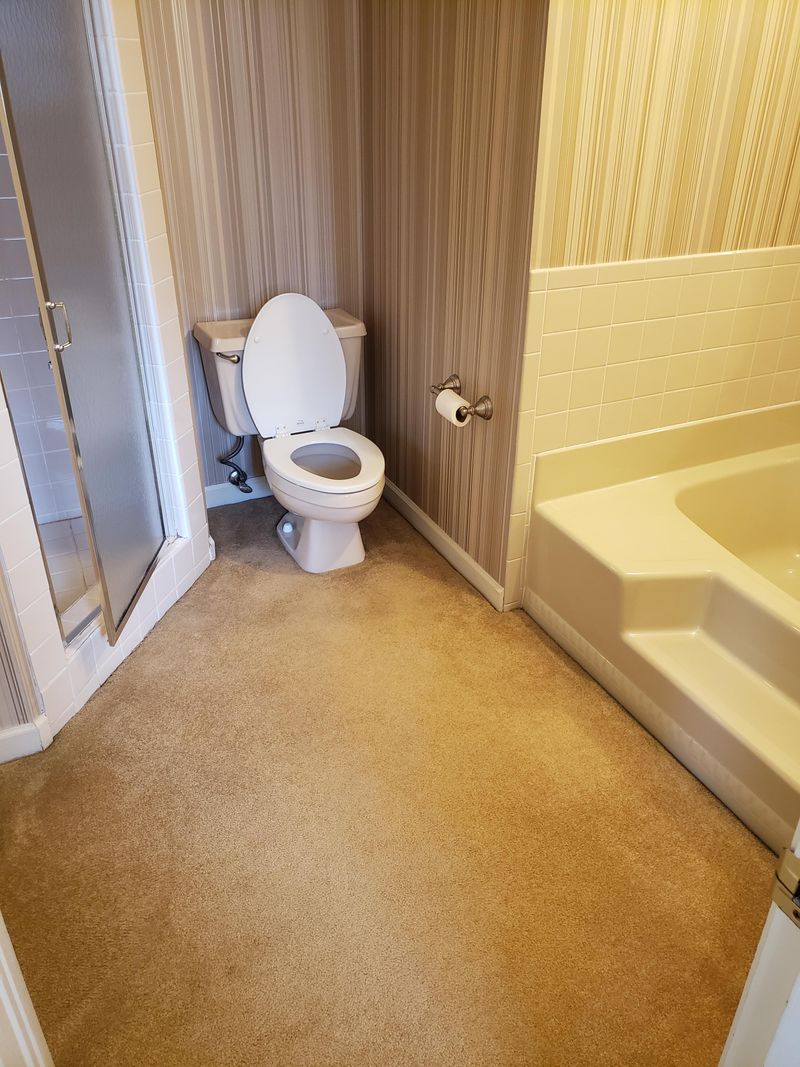
Carpeted bathrooms represent perhaps the most perplexing design choice still found in many Texas homes. In a state known for humidity and heat, wall-to-wall bathroom carpet creates the perfect breeding ground for mold, mildew, and unpleasant odors.
Beyond the obvious hygiene concerns, this dated feature signals to potential buyers that the home hasn’t been updated in decades. The moisture-prone environment of bathrooms makes carpet an impractical flooring choice that will need immediate replacement.
Removing bathroom carpet often reveals additional problems like water damage to subfloors or outdated plumbing fixtures. Smart Texas homebuyers are now walking away from properties with this red flag feature, knowing it indicates deeper maintenance issues throughout the home.
7. Pastel Kitchen Cabinets
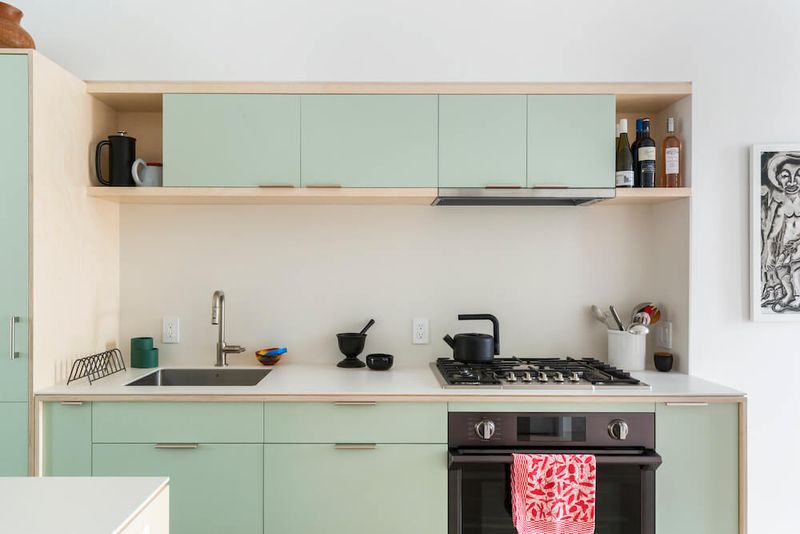
Pastel kitchen cabinets – those mint green, baby blue, or pale yellow installations – are rapidly falling out of favor across Texas. These candy-colored cooking spaces might have seemed cheerful when installed, but they quickly date a home and make it difficult to create a cohesive design scheme.
Modern kitchens feature clean lines and neutral tones that better showcase the architectural features of the space. Cabinet replacement represents one of the most expensive kitchen renovations, often starting at $15,000 for even modestly sized Texas kitchens.
Homebuyers increasingly view these colorful cabinets as immediate renovation projects rather than charming period features. By 2030, houses still sporting these pastel cooking spaces will struggle to compete with updated properties, especially in competitive markets like Austin and Dallas.
8. Sunken Living Rooms
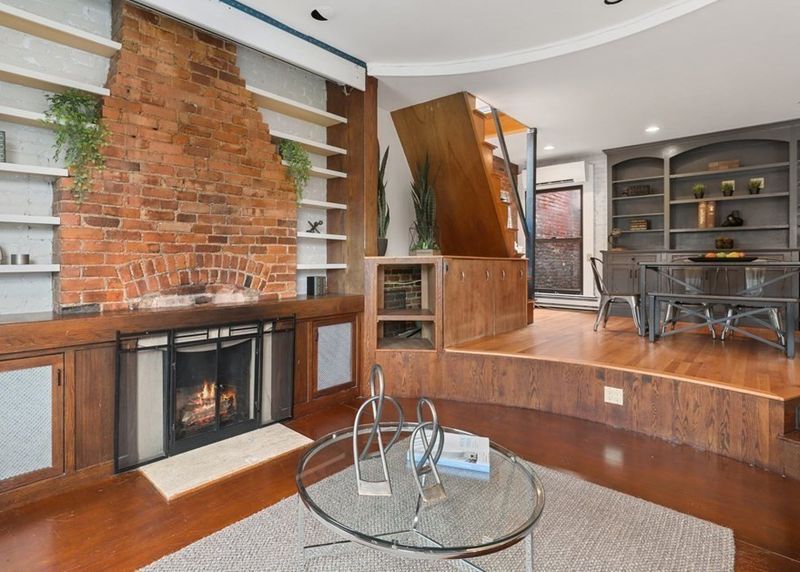
Sunken living rooms were once the height of sophistication in Texas homes, but they’ve fallen dramatically out of favor. These conversation pits create accessibility nightmares for aging populations and families with young children who can easily trip on the unexpected level changes.
Remodeling these architectural features is extremely costly, often requiring substantial structural work to level the floors. The stepped-down design also complicates furniture arrangement and limits how the space can be used as family needs change over time. Insurance companies have even begun flagging these features as liability concerns during home inspections.
As Texas demographics shift toward both younger families and aging boomers wanting to age in place, homes with these impractical sunken spaces will continue losing market appeal through 2030.
9. Cluttered Built-Ins
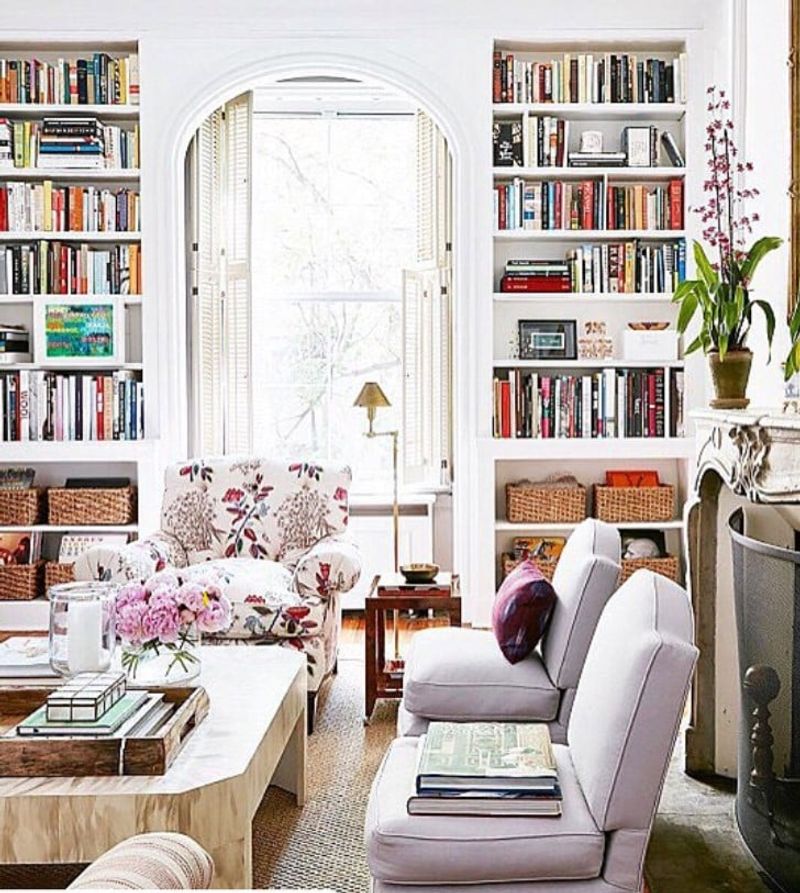
Ornate built-in shelving units with intricate woodwork and countless small display niches are rapidly becoming design dinosaurs in Texas homes. These bulky installations eat up valuable square footage while creating dust-collecting nightmares that feel overwhelmingly busy to today’s buyers.
Modern Texas homeowners prefer clean lines and minimalist storage solutions that blend seamlessly with the architecture. The dark wood typically used in these older built-ins makes rooms feel smaller and darker – a significant drawback in a state that celebrates light and space.
Removing or updating these permanent fixtures often requires skilled carpentry work and substantial wall repairs. As open-concept living continues dominating Texas housing preferences through 2030, homes still featuring these cluttered relics will struggle to attract buyers without significant price reductions.
10. Ornate Ceiling Medallions
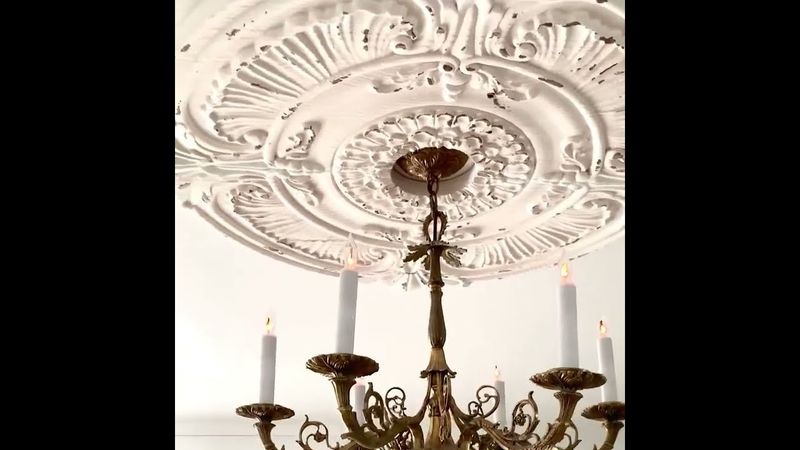
Ornate ceiling medallions – those elaborate plaster decorations surrounding light fixtures – are quickly losing favor in Texas homes. These fussy Victorian-inspired elements clash dramatically with the clean lines and simplified aesthetics preferred by today’s homebuyers.
Beyond looking dated, these medallions often become yellowed or cracked in Texas’s humid climate. Removal isn’t simple either, frequently resulting in ceiling damage that requires professional repair work costing hundreds or even thousands of dollars. While architectural details can add character, these particular flourishes have become shorthand for “outdated” among real estate professionals.
As Texas continues embracing more contemporary design influences through 2030, homes featuring these ornate ceiling elements will increasingly be perceived as requiring immediate updates.
11. Gold-Plated Fixtures
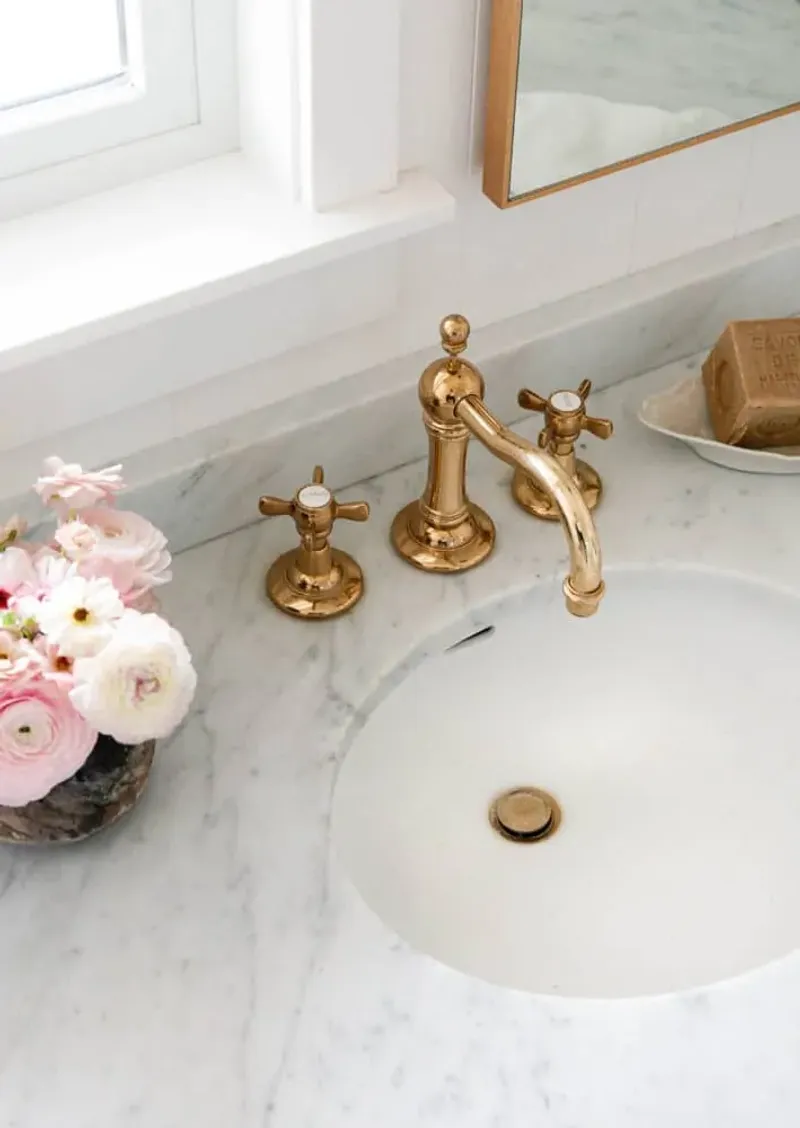
Gold-plated fixtures were once considered the height of luxury in Texas homes, but they’ve become one of the most dated features in today’s market. Those shiny brass doorknobs, faucets, and light fixtures scream 1980s excess rather than timeless elegance.
The finish on these fixtures often wears unevenly, creating spotty appearances that look neglected rather than luxurious. Texas’s hard water is particularly harsh on these finishes, accelerating their deterioration and making them look dull and tarnished.
Replacing all the gold fixtures throughout a home can quickly add up to thousands of dollars. As brushed nickel, matte black, and mixed metals continue gaining popularity, Texas homes still sporting the gold standard will look increasingly behind the times as we approach 2030.
12. Heavy Oak Woodwork
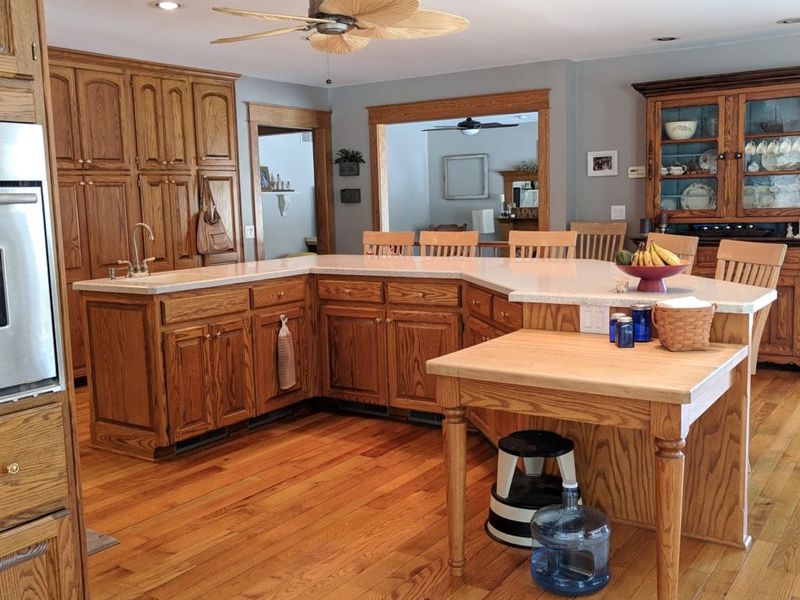
Heavy oak woodwork dominated Texas home design through the 1990s, but this orange-toned wood has fallen dramatically from favor. The bulky trim, wainscoting, and built-ins make rooms feel smaller and darker a significant drawback in the Texas climate where light, bright spaces are highly valued.
Painting or replacing this woodwork is labor-intensive and expensive. The deep grain of oak makes painting particularly challenging, often requiring multiple coats of primer and paint to achieve a smooth finish. Modern Texas homes feature simpler, cleaner woodwork in lighter tones or painted in contemporary neutrals.
As homebuyers increasingly seek airy, spacious-feeling interiors, properties still showcasing these heavy oak features will continue losing market appeal through 2030, especially among younger buyers.
13. Themed Bonus Rooms

Themed bonus rooms those dedicated spaces designed as home theaters with built-in stadium seating or game rooms with permanent poker tables are rapidly losing appeal in Texas homes. These highly personalized spaces represent significant challenges for new homeowners with different lifestyle needs.
Removing custom built-ins and specialized wiring can cost thousands, especially when structural elements are involved. Modern Texas families prefer flexible spaces that can evolve as family needs change – a home office that could become a nursery or a craft room that could serve as a guest bedroom.
Real estate professionals report that these single-purpose rooms actually detract from home values rather than enhancing them. By 2030, Texas homes with these inflexible specialized spaces will likely require substantial discounting to compete with more adaptable properties.
14. Matte Black Hardware

Matte black hardware may be trending now, but design experts predict this ubiquitous finish will quickly date Texas homes by 2030. The stark contrast these fixtures create shows every water spot and fingerprint – a significant drawback in humid Texas climates where fixtures require constant maintenance.
The dramatic look that initially attracted homeowners often becomes tiresome over time, creating a dated appearance much like the gold fixtures of previous decades. Hardware replacement throughout an entire home can easily cost thousands of dollars, making this seemingly small design choice an expensive mistake.
Forward-thinking Texas homebuyers are already gravitating toward more timeless finishes like brushed nickel or mixed metals that better withstand the test of time. Homes heavily committed to this passing trend will likely require updates to remain competitive in the near future.
15. Overstuffed Trim Work

Overstuffed trim work – those rooms with layers upon layers of crown molding, chair rails, and ornate baseboards – is rapidly falling from favor in Texas homes. This excessive ornamentation makes spaces feel smaller and more cluttered, contrary to the open, airy aesthetics preferred in modern Texas design.
Removing or updating ornate trim is surprisingly expensive, often requiring wall repairs and specialized carpentry skills. The style also tends to collect dust in Texas’s dry climate, creating ongoing maintenance headaches for homeowners.
Contemporary design emphasizes cleaner lines and more purposeful architectural details. By 2030, Texas homes still featuring these overly embellished interiors will appear dramatically outdated compared to properties with more restrained, intentional design elements that better complement today’s furniture and lifestyle preferences.
16. Ceiling-to-Floor Drapes

Heavy, ceiling-to-floor drapes with swags, jabots, and tiebacks are rapidly becoming design relics in Texas homes. These elaborate window treatments collect dust, block natural light, and make rooms feel smaller and more formal than today’s casual Texas lifestyle demands.
Modern homeowners prefer simpler window treatments that enhance rather than dominate a room. The fabrics used in these older installations often fade unevenly in Texas’s intense sunlight, creating a worn appearance that’s difficult to remedy without complete replacement.
Removing these outdated window coverings frequently reveals additional issues like sun damage to walls or outdated window frames. As Texas home design continues embracing indoor-outdoor living with emphasis on natural light, properties still featuring these heavy, formal draperies will appear increasingly dated through 2030.
17. Ceramic Tile Countertops

Ceramic tile countertops were once standard in Texas homes, but they’ve become a significant liability in today’s real estate market. The grout lines between tiles create perfect breeding grounds for bacteria and are nearly impossible to keep clean in busy kitchens and bathrooms.
Beyond hygiene concerns, these surfaces are impractical for food preparation, causing glasses to tip and creating uneven work surfaces. The tiles also frequently crack or chip in Texas’s foundation-shifting soils, leading to costly repairs.
Modern buyers strongly prefer solid-surface countertops like quartz or granite that offer seamless, low-maintenance alternatives. By 2030, Texas homes still featuring these dated, grout-heavy surfaces will struggle to compete without significant kitchen and bathroom renovations that typically start at $10,000 per room.
18. Arching Glass Bricks

Arching glass brick walls – those curved installations often separating entryways or bathrooms – have fallen dramatically from favor in Texas homes. These translucent dividers were popular in the 1980s and 90s but now signal to buyers that a home hasn’t been updated in decades.
The distorted light these blocks create feels dated rather than artistic, and the structures themselves are surprisingly difficult to remove without major reconstruction. Many Texas homeowners are shocked to discover these features are often load-bearing, requiring structural engineering to replace. Modern Texas architecture emphasizes clean sight lines and purposeful division of space.
As open concept and clearly defined rooms continue dominating design preferences, homes still featuring these glass brick relics will appear increasingly obsolete through 2030, requiring significant investment to update.

